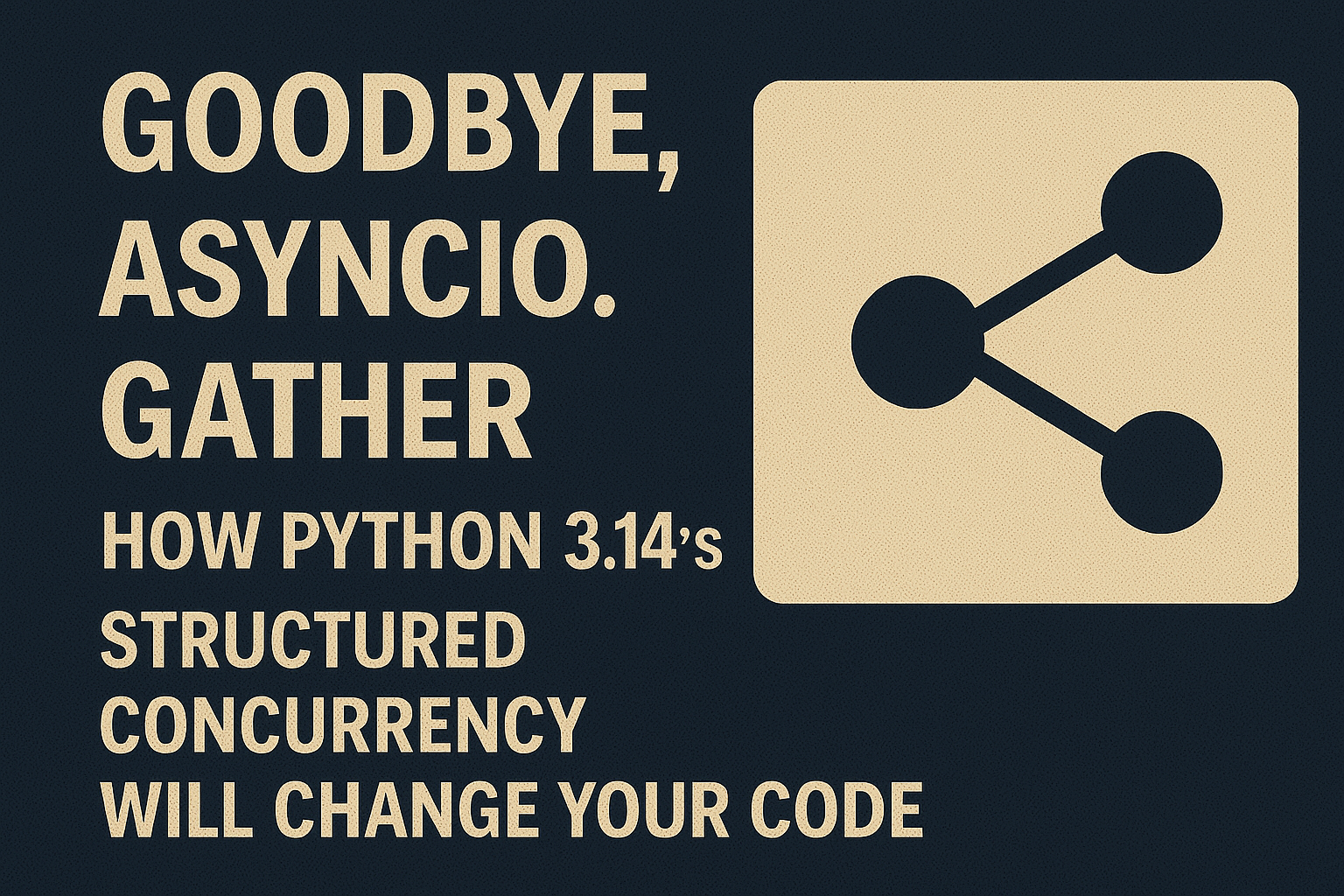There is no item in your cart

Goodbye, asyncio.gather: How Python 3.14’s Structured Concurrency Will Change Your Code
For years, Python’s asyncio library has been the standard for writing asynchronous code. Tools like asyncio.gather allowed us to run multiple tasks concurrently, but they came with their own complexities. Managing task lifecycles, ensuring proper cleanup, and handling exceptions across a group of independent tasks often led to complex, hard-to-reason-about code. A cancelled parent task could leave orphaned child tasks running in the background.
With the official release of Python 3.14, that paradigm is set to change. The introduction of first-class Structured Concurrency primitives is one of the most significant updates to Python’s async model, promising safer, more readable, and more robust concurrent applications.
The Problem with Unstructured Concurrency
The classic asyncio.gather is a form of “unstructured concurrency.” You launch a group of tasks, and they are off to the races. If one task fails, the others continue running. If the scope that launched them exits, you have to manually ensure all tasks are cancelled. This lack of a clear lifecycle boundary can lead to resource leaks and unpredictable application states.
The Solution: Task Groups and a Clear Lifecycle
Structured concurrency introduces the concept of a “task group” or “nursery.” All concurrent tasks are started within a specific block, and the program’s execution cannot exit this block until every task within it has completed.
In Python 3.14, this is typically implemented with an async with block:
Python
# The Old Way: Complex error handling and potential for leaked tasks
async def main_old():
try:
results = await asyncio.gather(
fetch_data("url_1"),
process_item("item_a"),
notify_service("event_x")
)
except Exception as e:
# Which task failed? Are the others still running? It's complex.
print(f"An error occurred: {e}")
# The New Way with Structured Concurrency in Python 3.14
import anystack # A hypothetical library name for the new feature
async def main_new():
try:
async with anystack.TaskGroup() as tg:
tg.start_soon(fetch_data, "url_1")
tg.start_soon(process_item, "item_a")
tg.start_soon(notify_service, "event_x")
except ExceptionGroup as eg:
# A new, clear way to handle multiple exceptions
print(f"One or more tasks failed:")
for exc in eg.exceptions:
print(f" - {exc}")
# The 'async with' block GUARANTEES all tasks are finished before continuing.
# If one task fails, all others in the group are automatically cancelled.
The Practical Benefits for Developers
- Enhanced Readability: The scope and lifetime of your concurrent tasks are now clearly defined by the
async withblock. The code is easier to read and understand. - Increased Safety & Robustness: No more “leaked” tasks. If any task in the group fails, the entire group is automatically cancelled, and an
ExceptionGroupis raised, ensuring a clean and predictable failure state. - Simpler Error Handling: The
ExceptionGroupmakes it trivial to handle failures from multiple concurrent tasks in a single, cleanexceptblock.
Conclusion
The introduction of structured concurrency in Python 3.14 is a massive step forward for writing reliable, maintainable asynchronous code. It forces us to think about concurrent tasks as a single unit of work with a clear beginning and end, eliminating a whole class of common bugs.
To take full advantage of new language features like this, you need a powerful IDE that understands them. The latest version of [PyCharm Professional from SMONE] offers cutting-edge support for new Python syntax, intelligent debugging, and powerful refactoring tools. Upgrade your toolkit to write better, safer Python code today!





























































